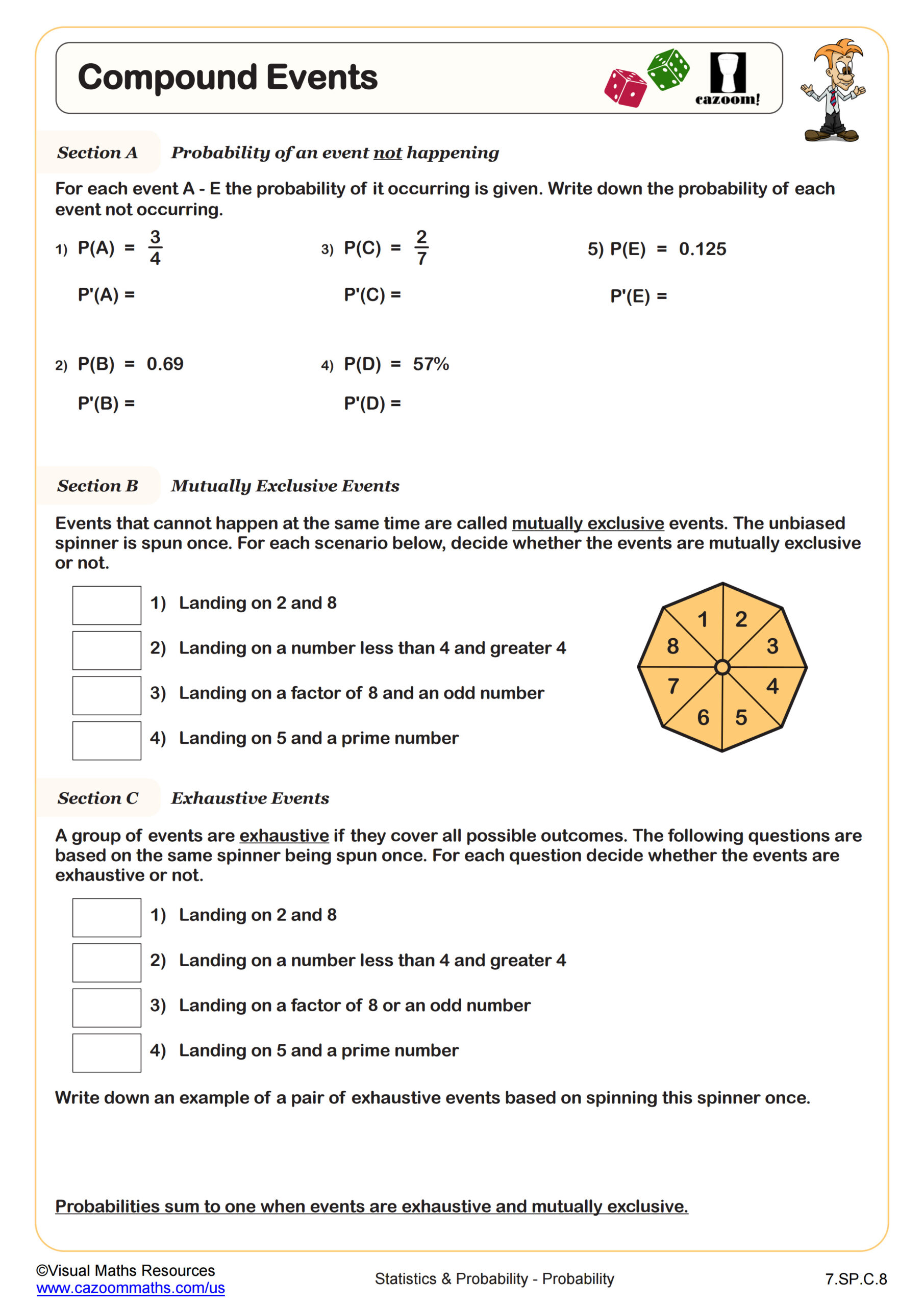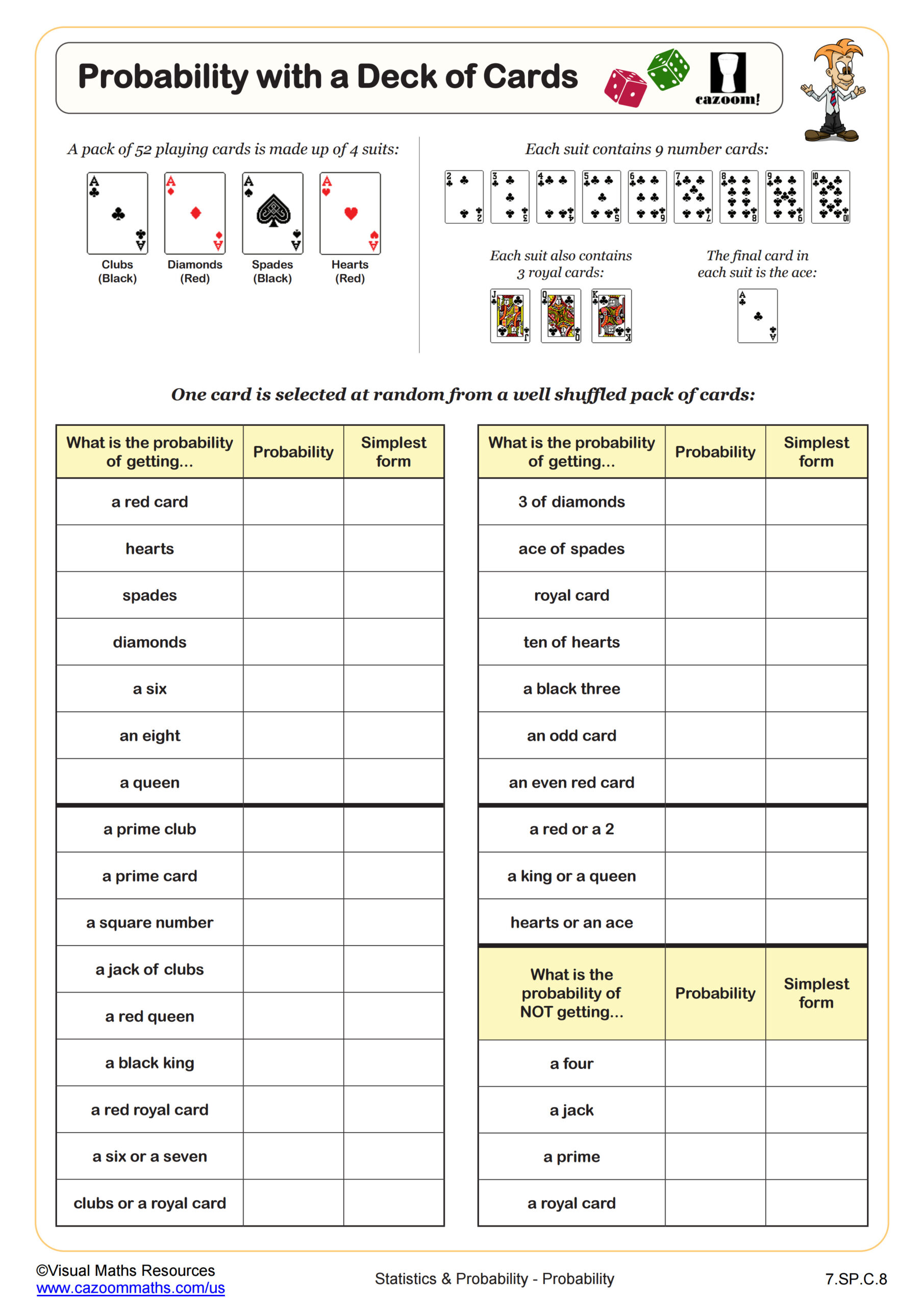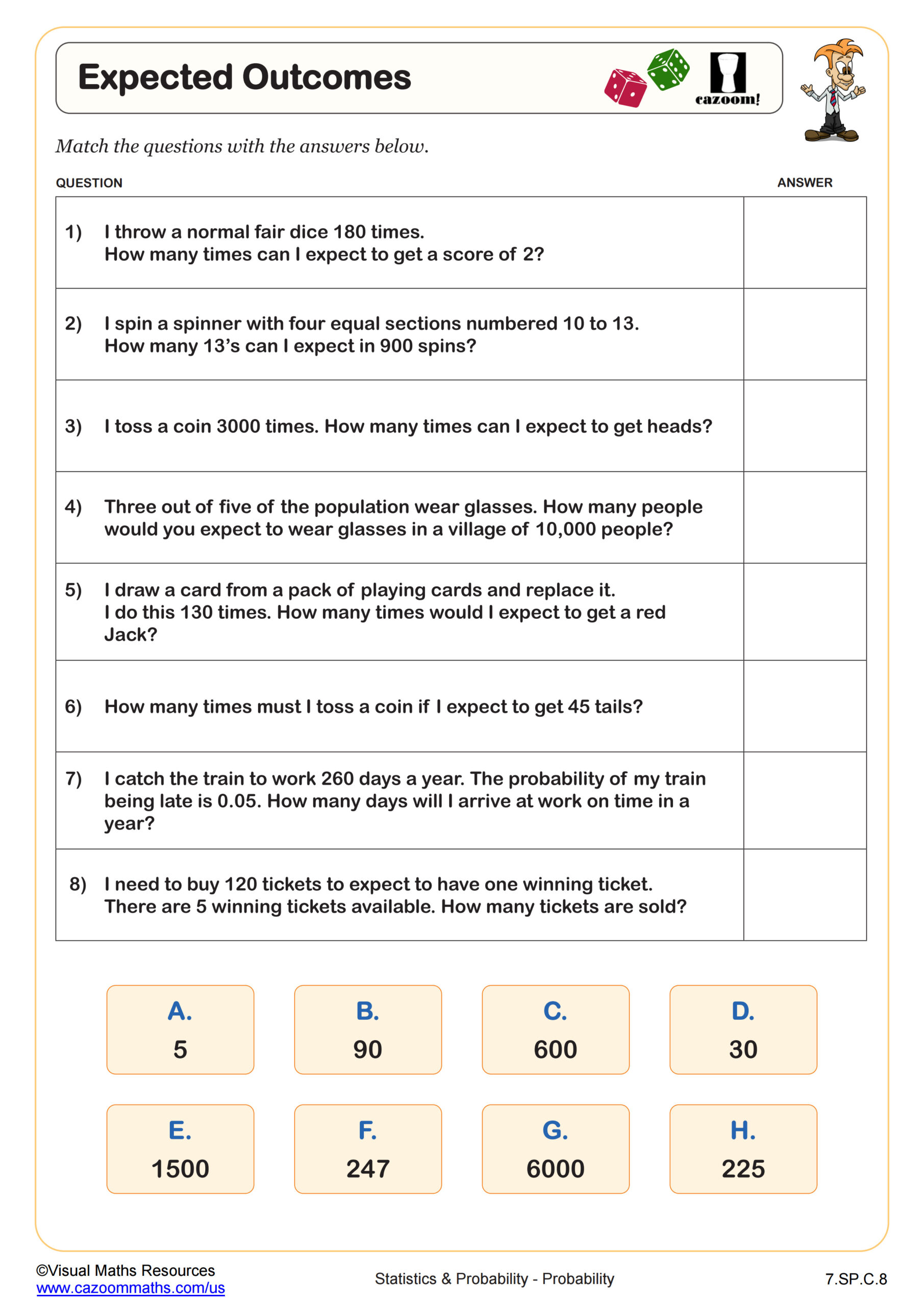Loading...
Back to:
Compound Events WORKSHEET
Suitable for Grades: 7th Grade
CCSS: 7.SP.C.8
CCSS Description: Find probabilities of compound events using organized lists, tables, tree diagrams, and simulation. a. Understand that, just as with simple events, the probability of a compound event is the fraction of outcomes in the sample space for which the compound event occurs. b. Represent sample spaces for compound events using methods such as organized lists, tables and tree diagrams. For an event described in everyday language (e.g., “rolling double sixes”), identify the outcomes in the sample space which compose the event. c. Design and use a simulation to generate frequencies for compound events. For example, use random digits as a simulation tool to approximate the answer to the question: If 40% of donors have type A blood, what is the probability that it will take at least 4 donors to find one with type A blood?
Compound Events WORKSHEET DESCRIPTION
Students will use the fact that the sum of probabilities for all possible outcomes is one to calculate probabilities of different outcomes and consider mutually exclusive and exhaustive events when working through this worksheet.
In section A, students are given the probability of an event occurring, and they will list the probability of each event not occuring. Probabilities are given as fractions, decimals, and percentages.
Learners are given eight scenarios across sections B and C; they must decide if these scenarios are mutually exclusive and/or exhaustive or not.
Section D consists of five further questions that ask students to calculate probabilities of different outcomes.




